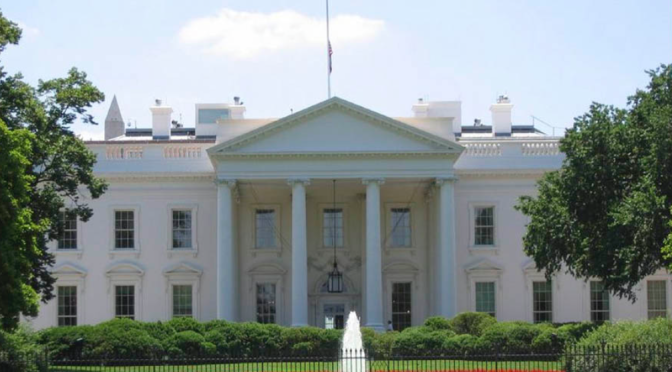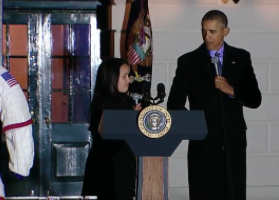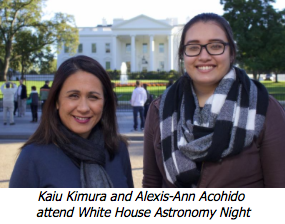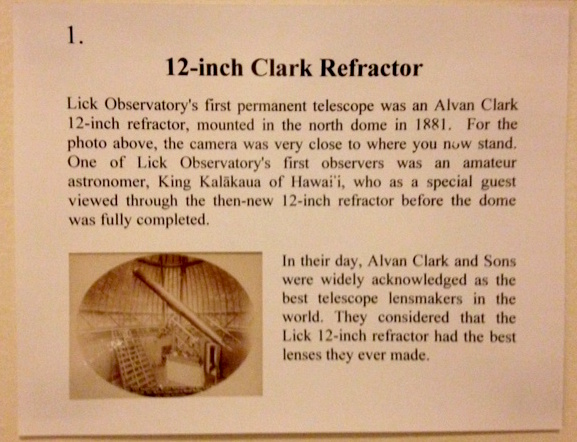I wrote about the THINK Fund back when it was getting started. It’s a grant and scholarship program provided by the Thirty Meter Telescope International Observatory to prepare Hawai‘i Island students to master science, technology, engineering and mathematics (STEM) and to become the workforce for higher-paying science and technology jobs in Hawai‘i’s 21st-century economy.
TMT contributes $1 million per year to the scholarship THINK Fund, which is now in its second year. It specifically benefits students only on Hawai‘i Island.
To date, more than 8,000 students and 150 teachers on Hawai‘i Island have been directly involved in a project supported by the THINK Fund at HCF – and it’s only been 15 months.
THINK stands for “The Hawai‘i Island New Knowledge” Fund, and funds are distributed by the Hawai‘i Community Foundation (HCF) and the Pauahi Foundation.
Of TMT’s $1 million annual contribution, $750,000 goes into the THINK Fund at HCF. Part of those funds go towards building a THINK fund endowment at HCF, so STEM learning on this island is supported long into the future.
The THINK Fund at HCF provides two types of grants:
1. Classroom Project Grants,for teachers in the public and charter schools, support STEM learning projects for grades 3-12. Teachers can post about a project for consideration on DonorsChoose.org anytime, and if they meet the criteria it is usually funded within a week or two.
More than $85,000 has gone to STEM classroom project grants since November 2014. Just since the beginning of this 2015-16 school year, 30 teachers have received funding for student learning materials such as National Geographic Space Building and Ocean Building kits, microscopes, laptops, and compasses.
Some other specific STEM classroom projects that have been funded by THINK:
- Applied Science supplies and kits to the Volcano School of Arts and Science public charter school, grades 3-5
- What is STEAM & Why My Students Need Your Help Please, to the Laupāhoehoe Community Public Charter School, grades 3-5
- Future Health Professional—Providing Hope for the Rural Community, to Ka‘ū High & Pahala Elementary School, grades 9-12
- Narrow the Achievement Gap in Mathematics, to Konawaena Middle School, grades 6-8
2. STEM Learning Grants, for non-profit organizations and schools, are awarded through an annual application process. The substantial amount of money awarded each year keeps going up.
In 2014, the THINK Fund at HCF gave $200,000 to launch the STEM Learning Grants. So many compelling community requests were received for grants, though, that HCF recruited other organizations to contribute to the funding too, and it received another $300,000.
As a result, in March 2015, $500,000 in STEM Learning Grants were awarded to 23 Hawai‘i Island organizations.
This year, more organizations are contributing to the STEM Learning Grants, the most recent being the Maunakea Observatories. HCF says this year’s goal is to distribute at least $700,000 in grants.
The types of programs funded through the STEM Learning Grants include after-school and intersession programs for students, project-based teams, robotics and student internships, equipment upgrades, STEM curriculum development in local schools, teacher development, mentor training, and STEM professional learning networks.
Twenty-nine applications for this year’s STEM Learning Grants are being reviewed now, and funding will be awarded in late March.
The THINK Fund at HCF also provides college scholarships. In 2015, 24 Hawai‘i Island students received a total of $95,500 in awards ranging from $3-7,500. The students are pursuing 17 different STEM degrees, from aerospace engineering to zoology.
This year’s college scholarships will be announced in May. One hundred thousand dollars worth of awards will be provided to students pursuing undergraduate or graduate level degrees, certificates, or other professional development coursework to become a STEM educator on Hawai‘i Island; or degrees or certificates in STEM-related fields.
Another bonus is that when a student applies to the THINK Fund at HCF scholarships, he or she is also considered for other HCF scholarships (HCF offers more than 200 in total).




 The new program will occur once a month and will include transportation to and from the summit and the Visitor Information Station, a cultural briefing, a one-hour safety and environmental briefing at Hale Pohaku, and a one-and-a-half hour visit to two of the Maunakea Observatories-the most scientifically productive collection of telescopes on earth. Participation will be free of charge and open to all Hawaii residents.
The new program will occur once a month and will include transportation to and from the summit and the Visitor Information Station, a cultural briefing, a one-hour safety and environmental briefing at Hale Pohaku, and a one-and-a-half hour visit to two of the Maunakea Observatories-the most scientifically productive collection of telescopes on earth. Participation will be free of charge and open to all Hawaii residents.


